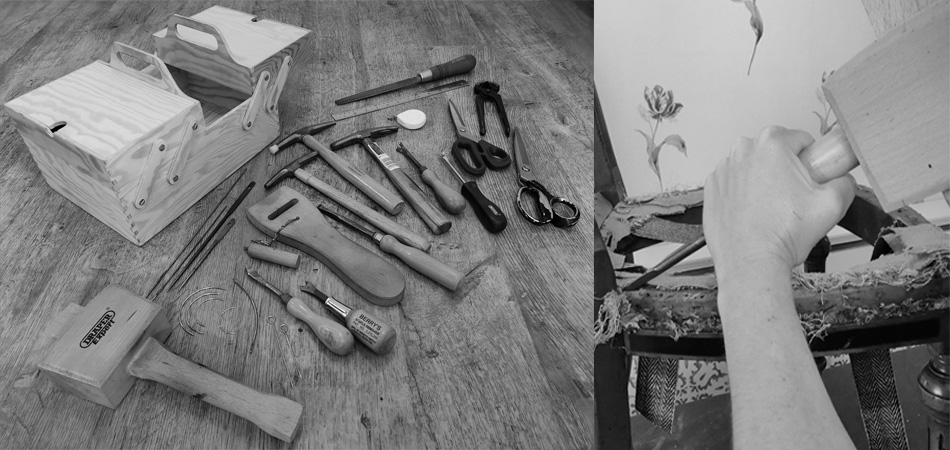
Traditional upholstery
Traditional upholstery is a laborious process that requires skill and paying particular attention to form and detail. The end result of this quality workmanship is an item of upholstered furniture that is pleasing to the eye, comfortable, functional and durable. read more.....
The upholstery process
The process of traditional upholstery involves a series of steps applied in a defined sequence. Yet, every individual type of antique seating would need to be approached differently.
Caring for your item
Antique furniture restoration and re-upholstering are both expensive. Here are a few tips to protect your item as much as possible:
Always handle the item with care especially when recalling the age of the item dating to the 1800s and early 1900s for Regency, William IV, Victorian and Edwardian items. read more.....
The upholstery process
The process of traditional upholstery involves a series of steps applied in a defined sequence. Yet, every individual type of antique seating would need to be approached differently, depending on period of the item of seating, frame shape and lines, and also determined by what part is being upholstered (seat, arm, inside back and outside back).
The first step is assessing the current upholstery and ripping old materials, if these are no longer adequate. The frame is also cleaned, repaired or professionally restored, as deemed required. The foundation of the upholstery is first created by fixing webbing. Positioning of the webbing depends on whether coil springs are to be used, which in turn determines the type of hessian to use. Coil springs were introduced in the mid-nineteenth century and come in different heights and gauges. Firm springs are used for the seats. The springs are tied to the webbing with spring ties, then the springs are lashed together with laid cord to create a sprung unit, covered with spring canvas/jute scrim and tied again with spring ties. In non-sprung pieces, heavy weight hessian/jute tarpaulin is fixed taut to the frame to provide the required support.
Two types of natural traditional stuffing are used and secured in twine ties. The first stuffing of natural coir fibre is covered with linen scrim, stuffing ties inserted and the edge is hand stitched with twine using rows of blind stitching and ending with top stitching to create a firm edge and to achieve the desired shape and height. The second type of natural teased hair provides the required softness and comfort. The final layers to be applied are cotton calico and naturally inherent fire retardant (FR) barrier interliner, followed by the chosen top fabric and any finishing touches (buttoning, trimming, nailing etc.). Lastly a black bottoming cloth is fixed to the bottom of the seat frame in sprung items of seating. In items that are not sprung, the bottoming cloth is fixed above the black and white herringbone webbing, which is considered the best quality. Fixing of materials is all done by hand using either tacks or staples, the latter being considered less intrusive, especially on delicate frames.

Copyright © 2024 The Sitting Place®. All Rights Reserved.


